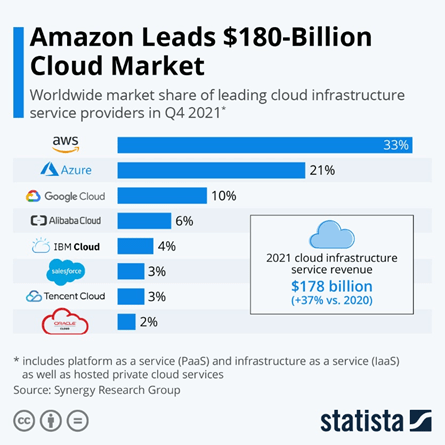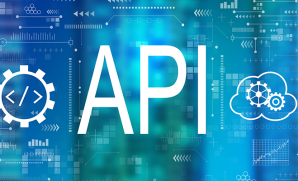Gartner suggests that by 2025, 51% of enterprise IT spending in key market segments will shift to the cloud. However, when thinking about the cloud, the most common barriers to adoption are often not technical or even business related. While the appeal should be obvious, getting everyone on board can be a challenge. Businesses may have existing operational practices and organizational structures that make it difficult for them to move to the cloud or maybe struggle with where to begin.
The challenges that enterprises face when transitioning their legacy systems to the cloud are many, and there are no easy answers. For starters, many of these challenges include complexity, cost, infrastructure limitations, and siloed infrastructure clusters that are unwilling to commit to enterprise-wide change. The result is that migrating to the cloud can be a highly disruptive process, leading to the loss of business opportunities and revenue growth. As such, organizations have begun to look for approaches that will support cloud migration swiftly and efficiently, with minimal interruption. Today forward-thinking organizations don’t question the move itself, but the pace of the move- not if we should migrate to the cloud, but how fast can we do it!
When we think cloud, only a handful of players come to mind, of which AWS is the clear leader.

Armed with a strong business case, and the right Cloud strategy, AWS can reduce costs, increase flexibility and boost productivity — no matter how complex your business. And by accelerating a transition to AWS, you will discover what’s possible for your business and unlock new opportunities.
When undertaking a cloud migration, YASH Technologies operates with three-fold success criteria
Enabling enterprise-wide cloud understanding:
You can’t bring real-time, nimble strategy and agility to the cloud migration if the business doesn’t understand what it’s trying to achieve, whom they work with, and how it should act when implementing change.
Defines expectations and move with informed planning
Focus on optimizing both the resource commitment and operational availability of your enterprise with a repeatable approach.
Eliminate siloes:
Your teams can move forward faster as you leverage a unified view of infrastructure and applications, but maintain control of your implementations. Your siloed teams working together means reduced costs of ownership and new agile technology that improves your ability to innovate and create new products.
To accelerate and improve AWS cloud migration efforts, YASH starts by fundamentally understanding your business, culture, and technology needs. We’ll work with you to identify what your ambitions are for cloud transformation, how you want to achieve these plans, and how they align with your company’s focus areas. In addition, we’ll evaluate what will truly help you realize the full potential of your journey with our Three-Phase Process for AWS Migration.
The Three-Phase Process for AWS Migration
Our methodical three-phase approach helps clients migrate to AWS. These phases are interconnected to build an iterative process, and as organizations increase the number of assets to be moved, process repeatability and predictability help accelerate the migration process. Here’s a breakdown:
Phase 1: Assess – Start the journey by evaluating capabilities
The MRA is an important first step in any successful migration plan.
The migration-readiness assessment (MRA) process begins by conducting a tool-based discovery of the organization’s portfolio. Our AWS experts can help evaluate your on-premise resources and work on an optimal cost projection for running workloads in AWS. This initial assessment provides an in-depth look at the current state of affairs, including key technology assets and their configuration, security posture, existing workloads, and usage patterns.
We put our proposed ecosystem, clients, and our solutions into context, to understand a business case for migration. For example, data center lease expiry or exit, additional developer productivity, global expansion, time to the market, Infrastructure modernization, upcoming M&A activity, etc. It’s also much easier for people to understand what’s going on when we cite specific examples of change within an organization.
For MRA, we use the Migration Evaluator, a migration assessment service that aids organizations by generating a directional business case for AWS cloud planning and migration. This offers a total cost of ownership (TCO) projection for AWS as per your utilization of resources. Think of it as your current on-premises footprint and projected cloud spend in a frame.
In fact, it computes patterns for all instances, showing the expected costs to re-host at AWS and the analysis of costs by infrastructure and software licenses.
If you just need to get right-sized Elastic Compute Cloud instance recommendations to run on-premise workloads in the cloud, YASH leverages the AWS Migration Hub. It offers a single location to store IT assets while tracking migrations to any AWS segment.
The Cloud Readiness Evaluation Tool (CRET) helps with workload evaluation, and strategy identification, and provides a tailored, consolidated report to establish the migration scale and timeline alongside your TCO analysis and business case.
In short, your migration process will begin with a detailed assessment of all current on-premise resources, including servers, storage arrays, routers, switches, and even databases. This assessment enables us to understand your existing environment’s needs and requirements for future migration. By understanding your needs as well as what you have already deployed in AWS we can determine which products may be most suitable for use during your migration scenario.
Phase 2: Mobilize – Create a Well Architected landing zone or AWS Control Tower for your workload and apps and find a proper migration pattern
As they enter the mobilization phase, enterprises have to build a migration strategy and optimize the business case. It is crucial to address any gaps that the assessment phase revealed about the organization’s preparation for cloud migration. The focus must be on creating a standard environment and improving cloud skills.
A key aspect of designing your migration plan is to gather your application portfolio data and streamline the applications using the seven common patterns:
- Relocate
- Re-host
- Re-platform
- Refactor
- Repurchase
- Retain
- Retire
Moreover, to maximize the advantages of cloud migration, your teams must have reasonable freedom to innovate. At the same time, it is essential to implement protocols for risk management.
YASH helps organizations use the AWS cloud adoption framework and readiness tool to develop plans for cloud migration as per their readiness for the transformation. We organize a holistic approach to quickly attain measurable business benefits from cloud adoption with minimal risk.
We also help businesses leverage the AWS Migration Hub to automate planning and track application migration across myriad AWS and partner tools so that they can choose the best ones based on custom requirements.
Phase 3: Migrate and Modernize – Have a plan, track migrations, and build an optimization roadmap as you go
This phase involves designing, migrating, and validating each of your workloads.
With the AWS Migration Hub, it is simple to get quick progress updates on all your migrations. It is also easy to identify and remediate problems if any. The best approach for several workloads is to shift to the cloud rapidly and then re-architect them in AWS.
While working with YASH, your enterprise can also use its migration to the cloud as an opportunity to refactor its legacy technologies. The effective ways and tools to facilitate this include infrastructure automation, agile development practices, cloud-native architectural patterns, Windows modernization, database modernization, and product-based operating models.
Why YASH?
At YASH we make it easier for you to migrate to AWS by providing you with a comprehensive roadmap of strategic choices that match your business needs and budget. We help define a systematic approach to architecture and migration, providing the confidence that comes from negotiating complex contracts with key stakeholders, understanding their priorities and goals, and working together to provide seamless service delivery in support of your organizational goals.
















